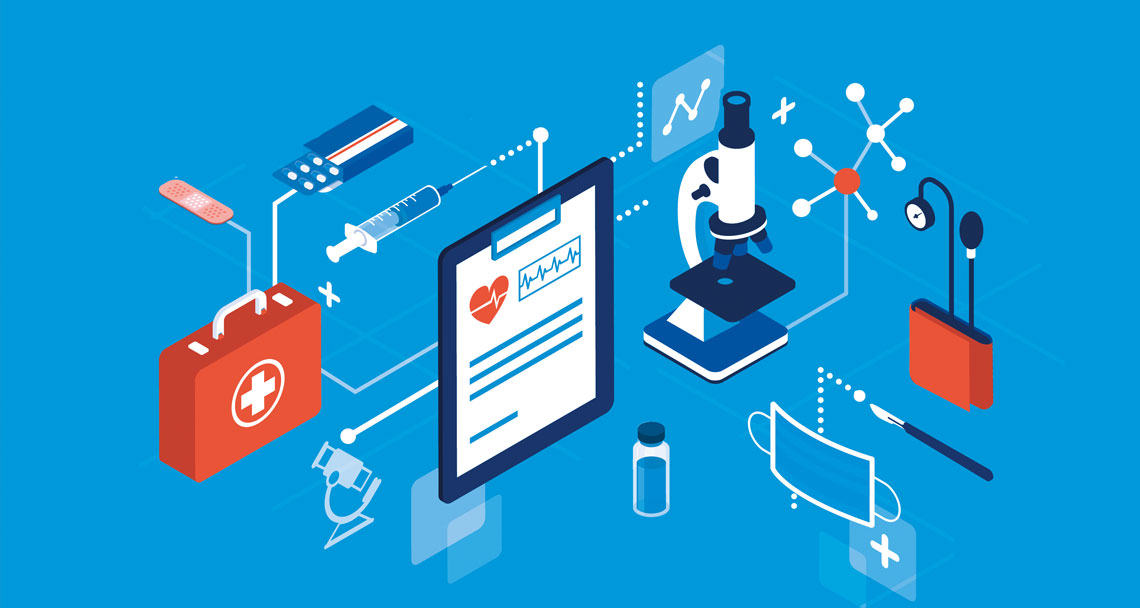Housing the digital healthcare revolution
As healthcare embraces new technologies we look at the role real estate will play in this rapidly changing landscape.
While the pandemic has put pressure on the delivery of acute healthcare, it has also necessitated rapid innovation in how society accesses the help it needs. Routine healthcare appointments quickly moved to telehealth solutions and other digital health platforms. This is likely to have long-lasting implications for how healthcare and senior care is delivered, and the real estate that houses it.
The rise of telehealth
Telehealth, the delivery of healthcare where patients and providers are separated by distance, has dramatically increased during the pandemic. By using digital services, providers have diagnosed and treated diseases and injuries, conducted research and supported the continuing education of health professionals.
In the US, a survey for the Centers for Disease Control and Prevention reported that telehealth visits increased by 50% in the first quarter of 2020 compared with 2019, and in the last week in March 2020 – as lockdowns kicked in – the increase was 154%.
This digital revolution was already underway: the OECD says that about three quarters of its member states have legislation, strategy or policy on the use of telehealth. However, the pandemic did spark investment into the sector. In 2020, telehealth platforms saw a massive influx of venture capital investment, growing 109% to $3.7 billion as investors recognised the turning point prompted by the pandemic.
Digital delivery will have implications for the amount and type of space that healthcare providers might be looking for in the future. Increasing familiarity with these platforms could see more routine care and initial diagnostics shift online. This could transform the balance of space within GP surgeries towards specialist facilities, such as new space for physical diagnostics and treatment.
The switch to telehealth is likely only to reduce face-to-face appointments by around 15%, but this could still have an impact. There could be areas of hotdesking for the higher levels of telehealth and email communications, which could affect the size and number of examination rooms needed. However, overall space requirements are unlikely to decline. Instead, surgeries will fill those gaps by bringing in more health-related community services such as those for mental health.
Targeted diagnostics centres could also be in accessible locations such as repurposed retail units on the high street. In the UK, the NHS is looking to roll out a new diagnostic centre concept to community hubs to relieve pressure on hospitals, including in shopping centres and out-of-town retail units. In the US, pharmacy CVS has expanded its HealthHub format to treat patients with chronic conditions, while a walk-in clinic was added to the Mall of America in an evolution of ‘medtail’ – the blend between retail and medical services. Incorporating medical uses where retail is struggling has many advantages: it benefits the community to deliver more accessible resources locally, provides regular footfall for the area, and offers landlords reliable tenants.
Innovations in remote diagnostics and monitoring
Another innovation for healthcare is the ability to diagnose and monitor patients through remote devices. It is a movement that fosters independent living as monitors and sensors, and even wearables such as fitness trackers, are adopted and supported digitally. It also helps shift the healthcare emphasis to a more proactive and preventative model.
Already in use is the HeartGuide from Omron Healthcare, the first wearable blood pressure monitor. Bio Patch is a non-invasive wearable that can help medical professionals monitor and measure a patient’s heart rate, ECG, heart rate variability, respiration rate and activity.
Whereas the impact on real estate is likely to be less direct, it is, nonetheless, an important consideration. With many countries having ageing populations and fewer younger people to care for them, technology could help mitigate the dependency ratios. Digital devices enable people to age at home for longer, freeing up specialist accommodation. It’s a lifestyle choice: people have to want to move rather than having an event that prompts the move. If you can bridge that gap, you’re on a winning streak.
That said, there are implications for the housing stock. If older people can live independently for longer, there needs to be more emphasis on downsizing. The operationally light, ‘housing with care’ retirement villages model could play a role and address the social interaction that independent living can’t satisfy. Remote monitoring and devices could mean shorter periods in care homes, and only when residents’ needs escalate. This affects the overall nature of care space. Turnover of residents could rise, putting pressure on income stability and operational efficiencies, thereby increasing costs. If the balance tips towards residents in poorer health, there would also be an impact on the types of facilities required with a greater need for more operationally intensive models.



